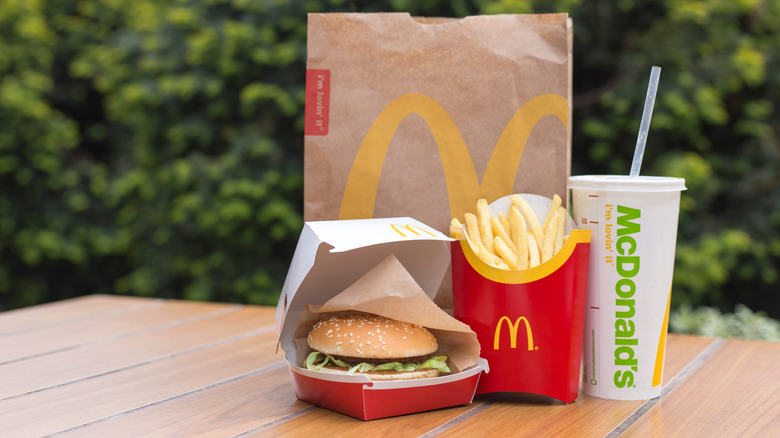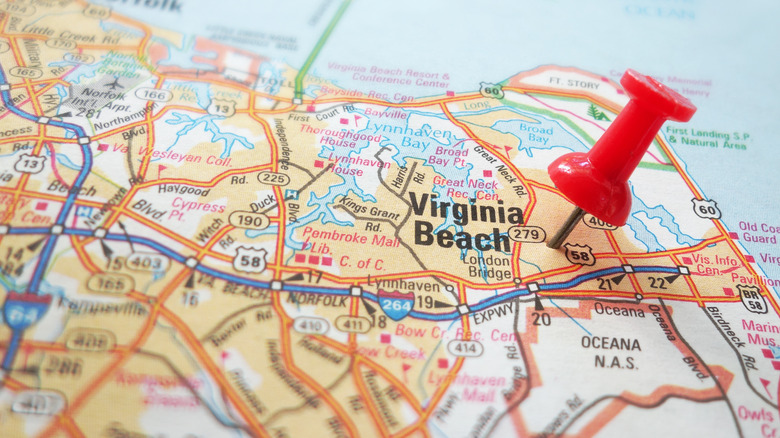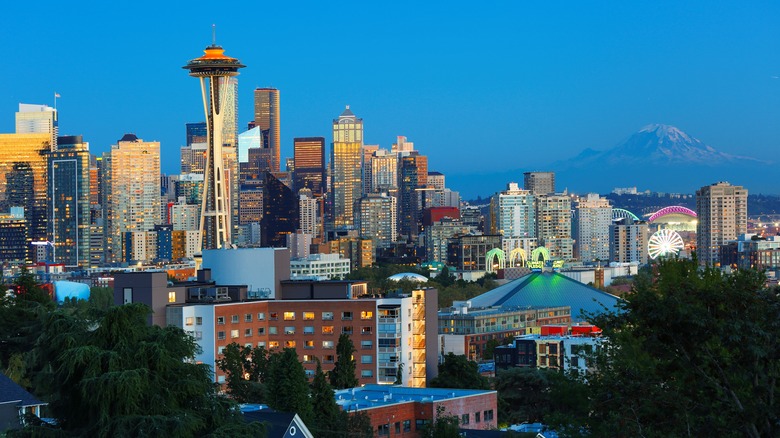The US Cities Where You'll Pay The Most For Delivery
People have been enjoying the luxury of food delivery since at least as far back as the 14th century (via YouTube). However, it's taken until fairly recently for food delivery to take off as a stand-alone industry, notes McKinsey. Today, that industry is worth about $150 billion globally. However, it still has various kinks to work out; to wit, notwithstanding vastly increased demand for food delivery since 2017, even the most downloaded food delivery apps have, thus far, failed to come up with a reliably profitable business model, explains Business of Apps. Sound surprising? Perhaps it's because you've observed, first-hand, the objectively exorbitant cost to consumers of food delivery. As it turns out, however, that cost doesn't necessarily spell high profits for delivery apps.
But what exactly is that cost? At a bare minimum, using a food delivery app will cost you 19% more than dining-in — for the exact same meal — according to Self Financial, which recently published the results of a study comparing the cost of food delivery in 100 of the largest U.S. cities/metropolitan areas. That 19% figure relates specifically to Lincoln, Nebraska, the U.S. city where the marginal cost of food delivery turned out to be the narrowest, per the study. In other U.S. cities, the markup was significantly higher. And in some cases, menu-price inflation made the picture still worse. Let's take a look at the U.S. cities where you'll pay the most for delivery.
How the cost of food delivery was calculated
Self Financial examined food delivery pricing data for the 100 largest U.S. cities/metropolitan areas to determine where you'll pay most for delivery of the same meal from the same restaurant. Taking a page out of the Economist's Big Mac Index, Self Financial compared the cost of the same meal purchased directly from McDonald's in each of those cities/metropolitan areas, to the cost of that meal if purchased therein through three popular food delivery apps, in each case using identical addresses for both the restaurants and the delivery points.
The meal in each case was a double Quarter Pounder with cheese regular meal, a 10-piece McNuggets regular meal, an order of medium fries, and a medium-sized Coca-Cola. The price of the meal, in each case, was confirmed via PriceListo as of April 6, 2022. In the interest of uniformity, all orders were placed between 5 and 7 p.m. local time on weekdays, excluding Friday. The three delivery apps used for obtaining data for this study were DoorDash, Grubhub, and Uber Eats.
Self Financial also ascertained the cost of cooking a comparable meal at home. Using Walmart grocery prices, the aforementioned meal would cost $9.16. Based on McDonald's dine-in prices, that same meal would cost more than twice that, or $20.07. That's probably not surprising considering restaurant price inflation. What's more startling, however, is how various U.S. cities stacked up in the study's final accounting of the most expensive cities for food delivery.
Virginia Beach: the U.S. city with the highest marginal cost of food delivery
Based on the data gleaned using the rubric described above, Self Financial determined that the price of having the aforementioned McDonald's meal delivered, on average across all 100 metropolitan areas studied, was $39.69. The average price of that same meal, when purchased in-store at McDonald's, came to $20.07. That represents an enormous markup for the privilege of having your food delivered. That being said, the average price of a McDonald's meal varies widely from city to city, as do the various charges that make up the cost of delivery from city to city.
As a result, the U.S. cities where you'll pay the most for delivery are not necessarily the cities where you'll pay the most for a McDonald's meal in general — nor are they necessarily the cities where the delivery app included in the study may exact the highest delivery fees. For example, the same McDonald's meal that cost $20.07 on average across the country came to just $13.75 in Virginia Beach, Virginia, according to Self Financial's data. But guess how much it cost to have that same meal delivered in the Virginia Beach area? That would be $39.12 — which is nearly equal to the national average, per the study. Indeed, reflecting a 65% markup, Virginia Beach is the U.S. city with the biggest marginal price differential between purchasing food directly from the restaurant and having it delivered via an app, per Self Financial's study.
Seattle: the most expensive city for food delivery overall
In Virginia Beach, that 65% cost differential between having your food delivered versus purchasing it directly, could make ordering in from McDonald's feel as frivolous as say, serving up a kilo of caviar à la Martha Stewart. By contrast, the marginal cost of food delivery in the Seattle, Washington, metropolitan area was 8 points lower, or 57%. Nevertheless, you'll still end up paying more in Seattle for delivery of the same McDonald's meal than you would in Virginia Beach — or, for that matter, than you would in any of the other 99 U.S. cities/metropolitan areas included in the study. For that reason, Self Financial declared Seattle to be the most expensive city for food deliveries among the 100 metropolitan areas studied.
So, what's driving the high cost of food delivery in Seattle? For one thing, Seattle's menu prices are higher — before you even get to the delivery fees. The McDonald's meal that we've been talking about all along — the one that cost $13.75 in-restaurant in Virginia Beach — was $23.53 in-restaurant in Seattle. When purchased via delivery app in the Seattle metropolitan area, that cost went up to $55.35. When purchased via either DoorDash or Uber Eats, the cost went up even further — to $57.07 (for Grubhub, the cost came in at $51.91). That's nearly $7 more than the average for both San Francisco ($50.81) and Chula Vista, California ($50.68), which came in second and third, respectively.



